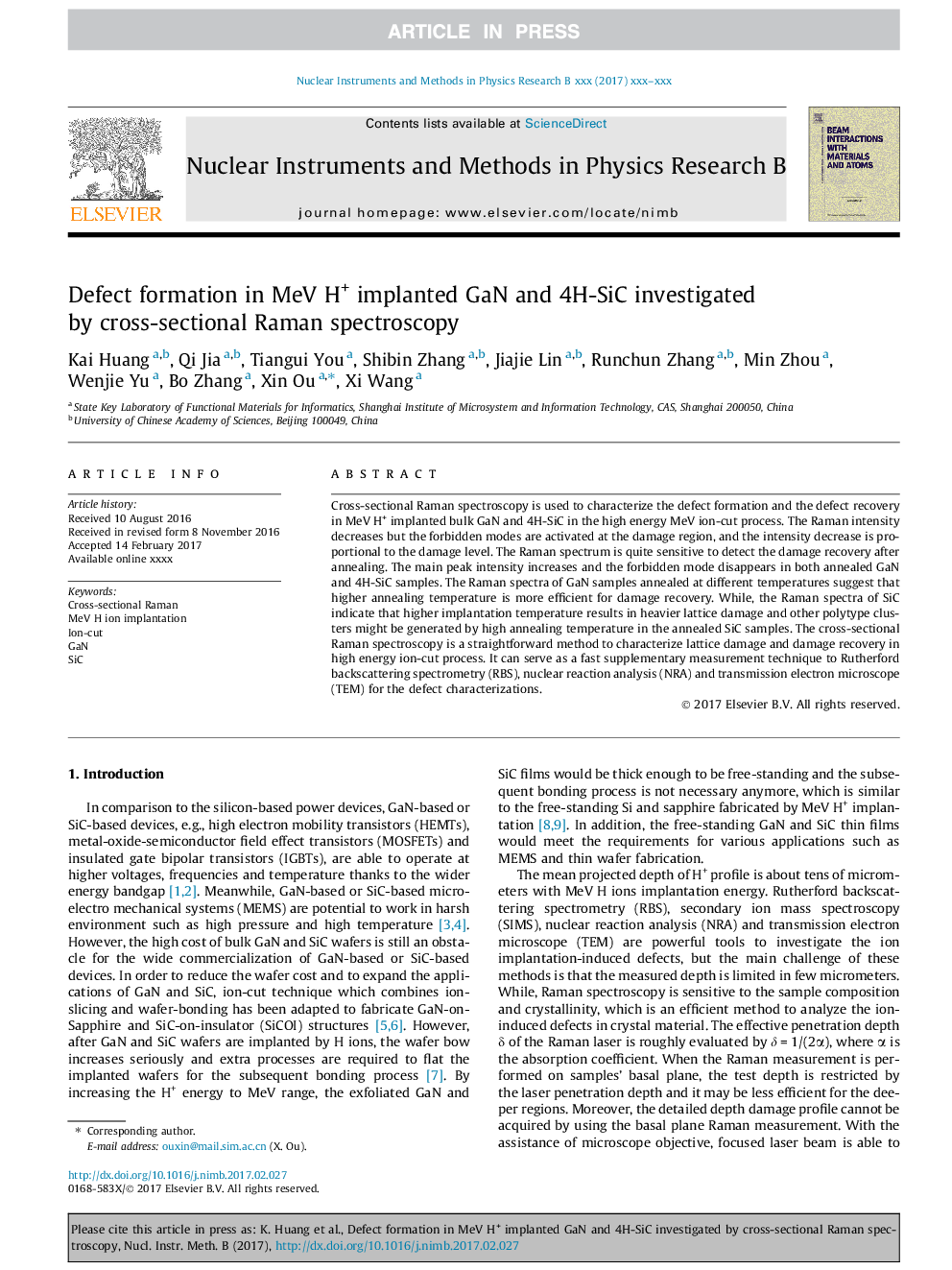| Article ID | Journal | Published Year | Pages | File Type |
|---|---|---|---|---|
| 5467594 | Nuclear Instruments and Methods in Physics Research Section B: Beam Interactions with Materials and Atoms | 2017 | 6 Pages |
Abstract
Cross-sectional Raman spectroscopy is used to characterize the defect formation and the defect recovery in MeV H+ implanted bulk GaN and 4H-SiC in the high energy MeV ion-cut process. The Raman intensity decreases but the forbidden modes are activated at the damage region, and the intensity decrease is proportional to the damage level. The Raman spectrum is quite sensitive to detect the damage recovery after annealing. The main peak intensity increases and the forbidden mode disappears in both annealed GaN and 4H-SiC samples. The Raman spectra of GaN samples annealed at different temperatures suggest that higher annealing temperature is more efficient for damage recovery. While, the Raman spectra of SiC indicate that higher implantation temperature results in heavier lattice damage and other polytype clusters might be generated by high annealing temperature in the annealed SiC samples. The cross-sectional Raman spectroscopy is a straightforward method to characterize lattice damage and damage recovery in high energy ion-cut process. It can serve as a fast supplementary measurement technique to Rutherford backscattering spectrometry (RBS), nuclear reaction analysis (NRA) and transmission electron microscope (TEM) for the defect characterizations.
Related Topics
Physical Sciences and Engineering
Materials Science
Surfaces, Coatings and Films
Authors
Kai Huang, Qi Jia, Tiangui You, Shibin Zhang, Jiajie Lin, Runchun Zhang, Min Zhou, Wenjie Yu, Bo Zhang, Xin Ou, Xi Wang,
